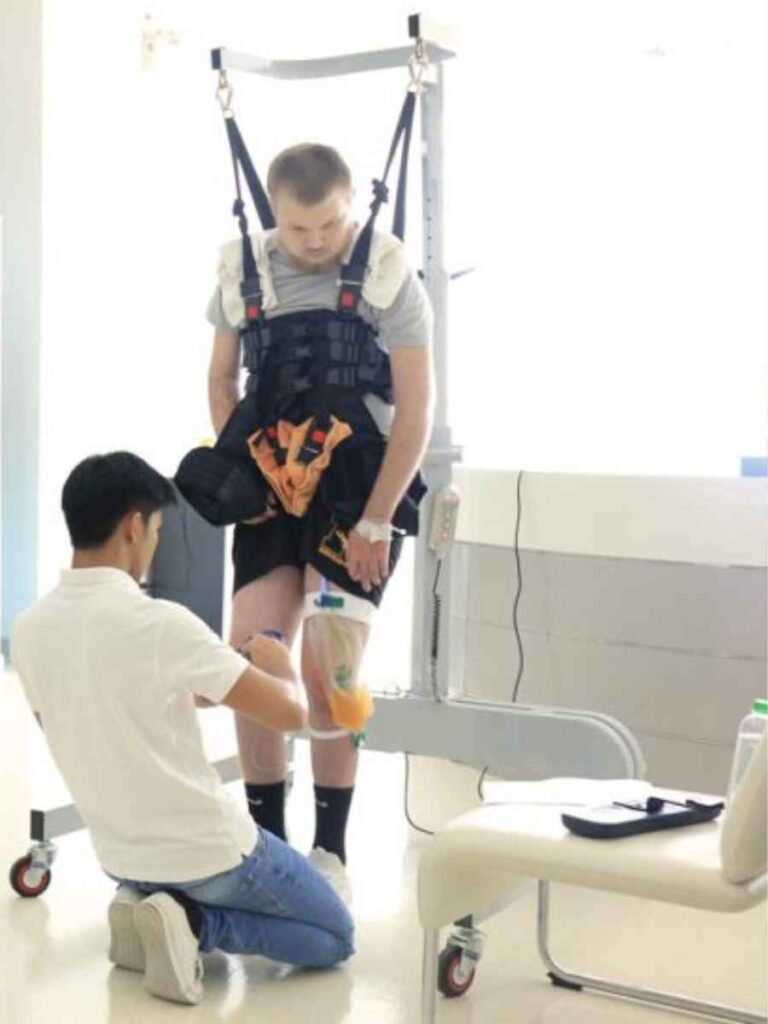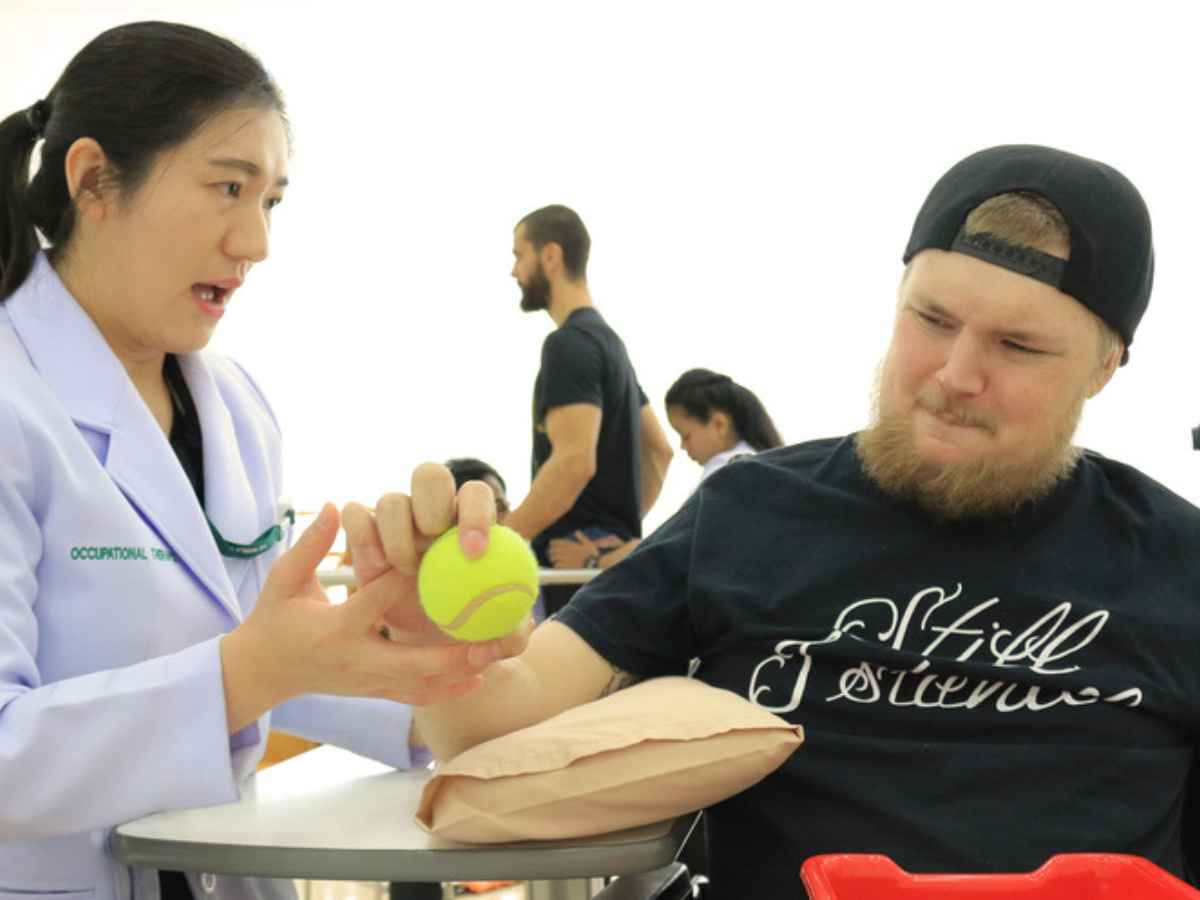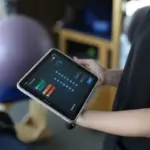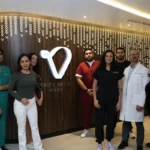Payton was in a car wreck, which left the 22 year old with a C4-level spinal cord injury. A year and a half later, he came to Verita Neuro Bangkok to receive epidural stimulation treatment. With his positive attitude and incredible support network, Payton saw some amazing results, including new movements in his upper body. We interviewed him a few times over the course of his treatment, discussing everything from his physical improvements to his experience of the Verita Neuro team.
Why did you come to Thailand?
For one, we don’t have these types of treatments in the US. So, after doing some research and stuff, I felt like Verita Neuro was good. Looking at the testimonials and seeing the hospital and everything, I felt really good about the program and treatment. Whenever I looked at it, I felt comfortable with that treatment, as opposed to a lot of treatments where I looked at them, but they seemed not as good. So, it wasn’t a hard choice after I looked at different options.
What were your thoughts before the surgery?
I think you’re always a little bit nervous when you’re going to have surgery, but I’ve had quite a few. So I was kind of used to it and I felt alright after talking to them [the medical team]. I’m excited to start the process and do the rehab – I’m always ready to work, so I’m excited for that. If you have this condition [SCI] in the hospital they’ll tell you ‘You’ll never do this, you’ll never do that, you might never get better’ but you can’t listen to that. There are things you can do to get better – never give up! The treatments are just in their infancy right now, so they’re always working on new treatments. You can never, never listen to people tell you that you won’t get better.
What are your improvements?
The only function I had before this surgery was from my chest up and very little in my arms. Now with the stimulator turned up, my arms are a lot stronger. I can also sit up by myself and I’ve gained a lot of core strength. I can turn the stimulator up and it kind of tightens my core up, which helps all my muscles work. Then also, in a hoist, I’ve been taking steps on my own, with just a little help. I’ve been standing with someone holding me up, so I have a lot more function than I had before I came here.
What changes do you see in your body?
Today I sat up on the side of the mat by myself for around 12 minutes. Also with some help, I’ve been standing up for around 5 minutes to 7 minutes at a time. At first it was really hard to get anything going but now I have some movement in my ankles. My quadriceps are starting to straighten my legs out and I’ve also been in the hoist and taking steps. It was pretty cool because I haven’t been able to do that since my car wreck a year and a half ago, which is where my injury came from.
How do you feel about getting back on your feet again?
Before now, I’ve never been able to hold myself up, so I would fall forward. I just don’t have any core strength. But now, being able to use the stimulator and turn it on and turn it up, my core stays a lot tighter. Then I have a lot more ability to hold myself up.
What kind of treatments did you receive here?
I started on a tilt table, to regulate my blood pressure. Then, every day at physiotherapy, I get on the tilt table and go up from 75 to 90 degrees, somewhere around there and then one of the therapists will stretch my arms. Then I usually move over to the mat. Lately I’ve been working really hard to sit up on my own and stay balanced because I don’t have any core strength or function. I am still able to sit using breathing and just a little bit of muscle contraction to help hold me up.
What’s your experience with the staff?
Yeah, it’s good. I like all the Verita Neuro staff, they’re all great. Really helpful when you need it and all the nurses here are really helpful anytime. They jump right on whatever you need – a lot of nice people in Thailand.
What improvements have you seen longer-term?
After the second surgery, I did a lot of mapping to try and catch up. We have a couple of programs set up. I have one for standing, so if a couple of people help me get up out of my chair, I can lock my legs. If they hold me up a little bit I can stand there for quite a while. I can sit and I’ve been sitting on the side of a bed. Yesterday, I sat for 40 minutes balancing using my core muscles. Before I could have never sat for even 30 seconds. I also have a program for stepping, so I’ve been up in a hoist with some help from the therapist. Also arching my back and being able to step very easily. So those are the programs that we have set up right now, but these are things that I’d never had before and was told that I never would have. So it’s pretty exciting.
Before, right after my accident, the only movement I had was a little in my shoulders. Now you can see if you look closely at my left finger, I can move it a little bit. Also my arms you can kind of see movements.

Did you face any challenges during your time here?
Definitely stepping is kind of painful and it takes a lot of energy. But I’m glad that I can do it. And hopefully the more that I do it, the easier it will get to strengthen my back muscles and leg muscles to be able to stand and take steps more easily.
How is your father motivating you through challenging times?
He just pushes me the most and doesn’t really allow me to not use the things that I can do. So even after I had some trouble with mapping, he just told me just do the best you can with what you have and then you won’t have any regrets. If it works, that’s great. If it doesn’t, you still did your best. Throughout my whole experience after this accident, he’s been right by my side and it helps a lot. It’s nice to be pushed. Some days, I don’t want to work hard and I don’t want to do anything. But my support system has been beside me the whole time and so I feel like I owe it to them to always do my best.
How do you feel after your treatment?
Verita Neuro is an awesome organization because treatments like this, you can’t find them – in a lot of countries, they’re just not approved. This treatment may not even be available in other countries for, you know, 10 or 15 more years. It truly is a breakthrough treatment and it has helped so many people. I just want to say thank you because the therapists and all the nurses are very helpful. It’s just a big thank you for pushing me because just in the short time I’ve been here, I’ve done things that I thought that I couldn’t do. If nobody had ever pushed me, I might have never figured that out. Thank you to all of them.
The above is not a verbatim transcript of Payton’s interviews. Some comments have been altered or re-arranged in order to improve the reading flow. If you would like to see all of the videos, you can visit our YouTube channel here and search ‘Payton’.





